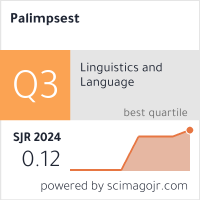SENTENCE STRUCTURE IN HUMAN AND AI-GENERATED TEXTS: A COMPARATIVE STUDY
DOI:
https://doi.org/10.46763/PALIM25101915shAbstract
This mixed-method study analyzes the syntactic differences between human and AI-generated text. To this end, the study includes a corpus of 20 essays (10 human, 10 ChatGPT-generated) across 10 topics, with each sentence in those essays manually coded for structure (simple, compound, complex, compound-complex). Sentence length, total word count, and number of sentences are also measured to gain further insights. Preliminary results indicate that 1. Humans’ sentences are longer, on average; 2. Both human-written and AI-generated texts rarely include compound-complex sentences; 3. 60% of AI-generated text have no compound-complex sentences whatsoever, and 4. Both AI and human texts consistently rely heavily on simple sentences, though human-authored pieces of writing display more variation in their use of simple sentences across different essays.
Keywords: Syntactic features; Syntax; Artificial Intelligence; Academic Writing; Comparative analysis.


